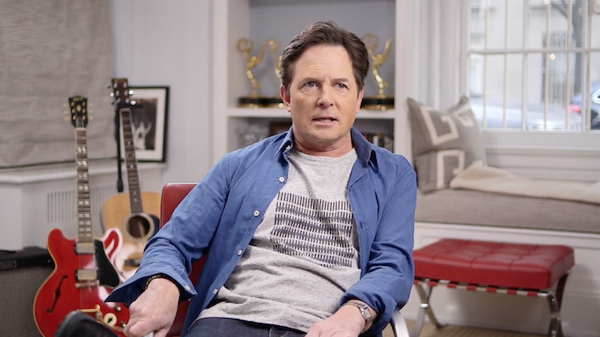Movie review by Greg Carlson
Celebrating the 30th anniversary of “Back to the Future,” Jason Aron’s crowdfunded documentary “Back in Time” tries unsuccessfully to capitalize on the blockbuster’s enduring appeal. Released online for “Back to the Future Day,” October 21, 2015 – the date selected in the sequel by Marty McFly to go and save his yet-to-be-born children – “Back in Time” is earnest to a fault. While the movie intends to be the last word on the highest grossing film of 1985, “Back in Time” is ultimately too broad and scattershot to transcend its status as a curio by the fan, about the fan, and for the fan.
Before the torpor fully sets in, Aron lines up an impressive gallery of talking heads to gush, fawn, and deploy much hyperbole – some of it merited – on the magic of Robert Zemeckis and Bob Gale’s practically perfect summer entertainment. In one exquisitely packaged bite, Steven Spielberg claims that “Back to the Future” “defines the taste of buttered popcorn.” Along with Gale, Zemeckis, and Spielberg, cast members Michael J. Fox, Christopher Lloyd, Lea Thompson, Claudia Wells, Donald Fullilove, James Tolkan, and others appear to reminisce about their experiences. The verdict: Aron should have cut Wells and Fullilove playing minigolf for charity in favor of more Fox and Lloyd.
In addition to the actors, Huey Lewis, Alan Silvestri, Dean Cundey, Frank Price, and others turn up to share their memories. As inspirational grab bag, “Back in Time” happily tanks up on scene after scene of warm and fuzzy adulation coming from both the people who made the movie and the most devoted and obsessed audience members. From DeLorean DMC-12 “Time Machine” collectors and restorers, who appear in a section so protracted you start to think it will take up the rest of the feature-length running time, to detours on the science behind hoverboards and flying cars, the movie’s exasperating inclusivity will cause plenty of viewers to locate the fast forward button.
For all the stuff it crams in, “Back in Time” toothlessly squanders real opportunities to deal directly with legitimate arguments concerning the shortcomings of the two sequels. While the story of the firing of Eric Stoltz on the original production is handled with more tact and detail than you might expect from what sometimes comes across as a glorified DVD behind the scenes bonus feature, the exit of disgruntled not-so-secret weapon Crispin Glover is conspicuously ignored. To his credit, Aron keeps Dan Harmon’s admonishment that “Everybody knows II and III suck,” but then pretty much leaves it at that.
You’ll also wonder why Aron feels the need to include so much footage from stuff like “The Goldbergs” and “American Dad,” even if Adam F. Goldberg’s thoughts on mother-son incest humorously address the original film’s most durable and potent subtext. A much more satisfying critical examination of “Back to the Future” can be found in Andrew Shail and Robin Stoate’s 2010 British Film Institute monograph, which unpacks ideas about filmmaking, teen culture, nuclear energy, 1950s nostalgia, and time travel cinema in ways frustratingly untouched by Aron’s documentary.
